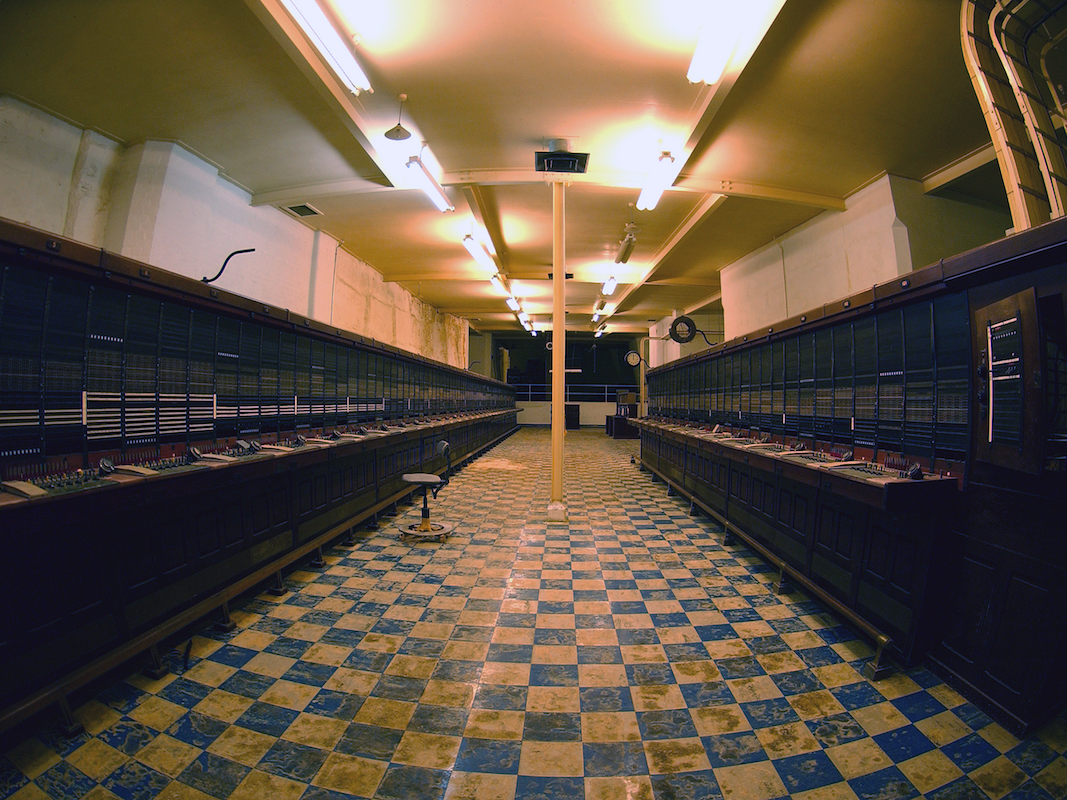In December 2004, a short announcement was posted on the Ministry of Defence’s website.
It read: “A formerly secret Government underground site near Corsham in Wiltshire, which was a potential relocation site for the Government in the event of a nuclear war, was declassified at the end of 2004.”
This was the first official acknowledgement of an urban fortress lying beneath the picturesque English town of Corsham which was, for around forty years, the British military’s most closely-guarded secret.
The threat of war hung over the west in the 1950s, and the Cabinet Office decided that an alternative seat of government was needed to prepare for the worst-case scenario: all-out nuclear war.
In 1955, the Central Government War Headquarters was commissioned, and work to transform the space began in earnest (it was never referred to as a “bunker” in government literature, but Burlington was one of its many contemporary codenames and the alliterative phrase stuck.)
Set within a 240-acre abandoned quarry, it was a sprawling underground city, a 35-acre network of hidden entrances, streets, canteens, and purpose-built rooms designed to house Prime Minister Harold Macmillan along with the entire British government - even, it seems, the Royal Family - in the event of nuclear attack.
It had everything that 4,000 government staff - though not their families - would need to survive for 90 days in conditions of thermonuclear war, or a major conflict with the Soviet Union: 100ft-deep reinforced concrete walls, bedrooms and offices, wired telephones, a bakery, a hospital - even a BBC broadcasting studio to communicate with survivors.
Business Insider obtained the following photos from the Ministry of Defence. They were taken in 2005. Though the site has been declassified since 2004, much of what is known about it has been in the public domain since 1982, when journalist Duncan Campbell reported its existence.
This is the story of the "Burlington Bunker."
The Corsham Tunnels began life as an underground quarry, producing limestone that would later be called bath stone.

Mining had taken place since Roman times, but the period from 1841 to around 1910 became a 'golden age' of quarrying after Isambard Kingdom Brunel oversaw the construction of the nearby Box Tunnel, a huge engineering project which created an underground stretch of railway from London to Bristol.
Much of nearby Bath's iconic architecture was made from stone taken from Spring Quarry.

During the Second World War, the site took on a different role. It was acquired by the Ministry of Aircraft Production in 1940 and transformed into an underground aeroplane engine factory. Graffiti daubed on the walls by wartime factory workers was visible for decades afterwards.

In 1943, celebrated artist Olga Lehmann was invited to paint the walls in the canteens of the factory.

Lehmann's Corsham project took eight months to complete and involved painting murals of six canteens. The oil paint used was supplied by the factory, and also used in the production of wartime aircraft.
Photos of Queen Elizabeth II, Princess Margaret, and wartime actors and celebrities plastered the walls of the wartime factory.

Contingency planning for a new world war began in the early 1950s as tension between the West and the Soviet Union rose. The British government now faced the new reality of atomic war, which would bring damage far greater than that caused by German planes during the Blitz (pictured).

As reported in historian Nick Catford's exhaustive accountof the Burlington Bunker, contingency plans from 1955 assumed that the UK would be hit by 132 atomic bombs in the event of war, with 35 targeting London.
Planners predicted that those bombs would kill around 1.7 million people and injure another million, with two-fifths of the country's housing stock and half of its manufacturing industry destroyed.
In 1955 — after years of deliberations and committee meetings — Prime Minister Anthony Eden formally approved the construction of the Central Government War Headquarters in Corsham.

The secret project would be referred to by the codename "Subterfuge" (later codenames included Stockwell, Burlington, Turnstile, and Eyeglass.)
Perhaps the most striking part of the building is the magnificent 1950s telephone switchboard — one of the biggest in the world of its kind — which lay perfectly preserved for decades after it was built.

It is currently on a list of historic buildings deemed "at risk" from neglect due to problems with damp.
Pictured is the BBC broadcasting studio, which was maintained until 1991. It would have allowed the prime minister to broadcast messages to the surviving population via the BBC's above-ground emergency centre.

The enormous network of tunnels was mapped out with an American-style roadmap system. Pictured here is the North West Ring Road, located near the site's bakery and canteen.

The site had two canteens. This is a chalk menu board outside one of them.

As reported by Catford, the list of materials stored on the site by 1961 gives some indication as to its sheer scale. Kitchen and dining equipment included: 225 canteen tables, 2,320 dinner plates, 2,320 tea cups, 1,152 tumblers, and 11 tea trolleys.
The labels on these ovens demonstrate that they were never used.

One of the unused and still-glistening coffee machines stored in the canteen.

On the left of the photo, a rusty escalator designed to carry passengers out of the bunker can be seen. The escalator was originally destined for Holborn Underground Station in London.

Residents of the bunker would travel around the enormous site using electric buggies.

This record player forms part of the bunker's public address system. It could be used to pump music through the corridors of the complex.

A 700 series phone still in its wrapping. Enormous piles of stores were kept at the site for many decades afterwards: thousands of office chairs, telephones, bedding, toilet rolls, ashtrays, and much more.

The site included a dark room which could be used to develop photographs.

This room would have been an office. Wires hang from the ceiling, indicating that teleprinters would have been installed here to transmit telegraph messages to the outside world.

A row of sinks, located near an area designated for staff bedrooms.

The sluice room in the site's hospital.

The Ministry of Defence labels this room the prime minister's private bathroom. It is one of the few rooms in the entire site which was painted.

This bathroom is part of an odd suite of rooms which many believe were built to accommodate the Royal Family. The area has only one point of access, and has high-ceilings and is painted, unlike most of the complex.
Speculation about the royal connection is unlikely to be confirmed because sensitive references to royals in government documents - even declassified ones - are typically redacted.
A lift which carried passengers to the site from ground level.

This huge butterfly valve within the ventilation system was designed to shut off the circulation of outside air in the event of a gas attack or nuclear fallout.

The Corsham site was maintained until 1991, when it was deemed too run-down and expensive to keep maintaining. It was decommissioned in 2004.

The government is still trying to sell the tunnels and ground above to a private investor. Proposed uses include an enormous wine cellar or a data storage centre like the one pictured.

